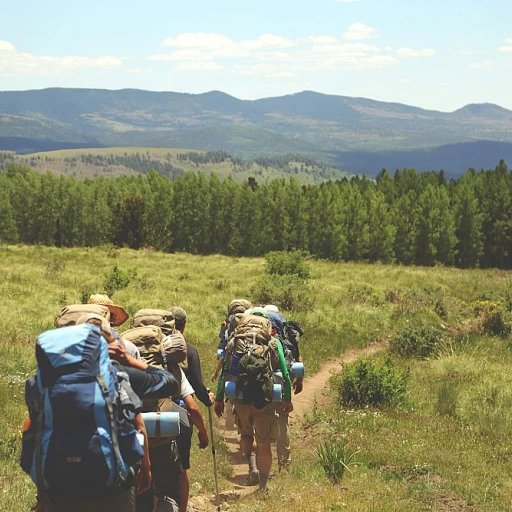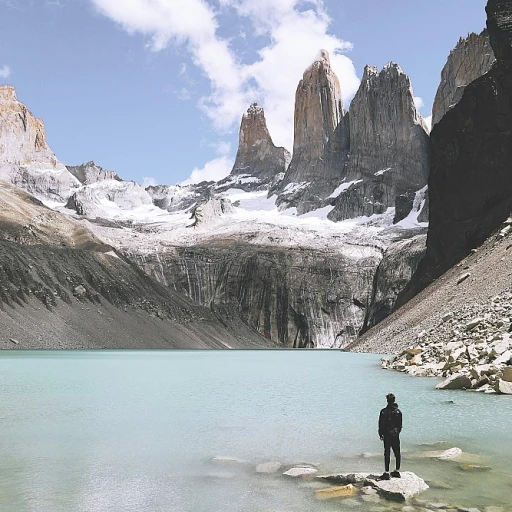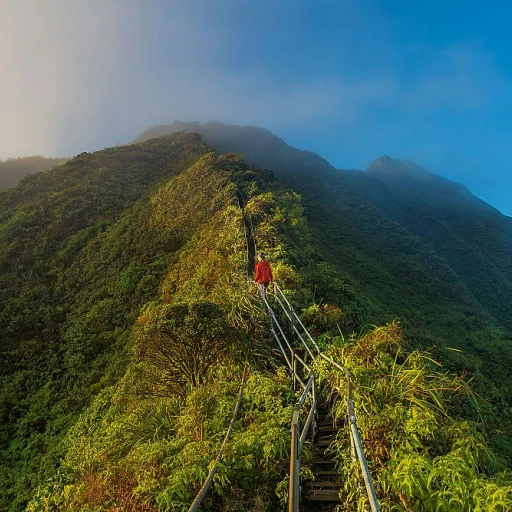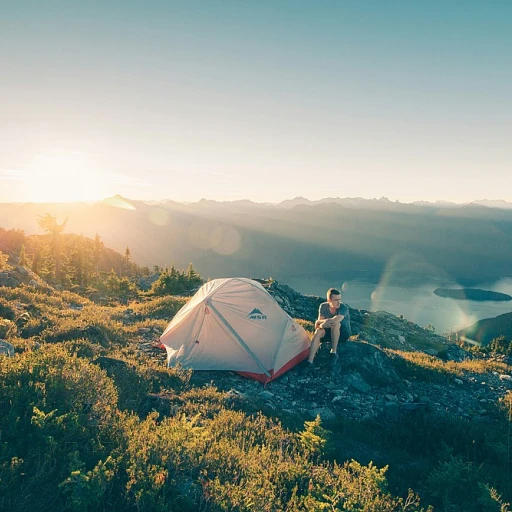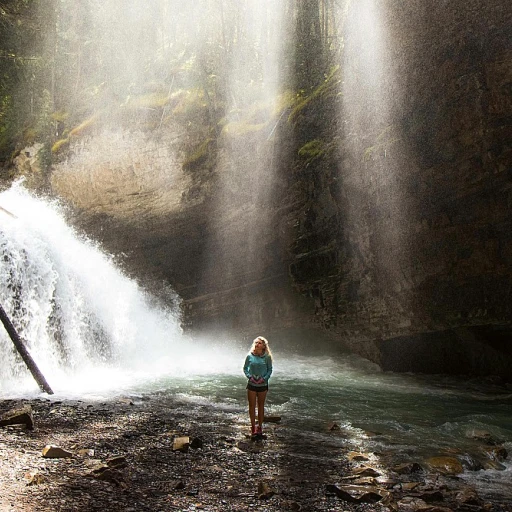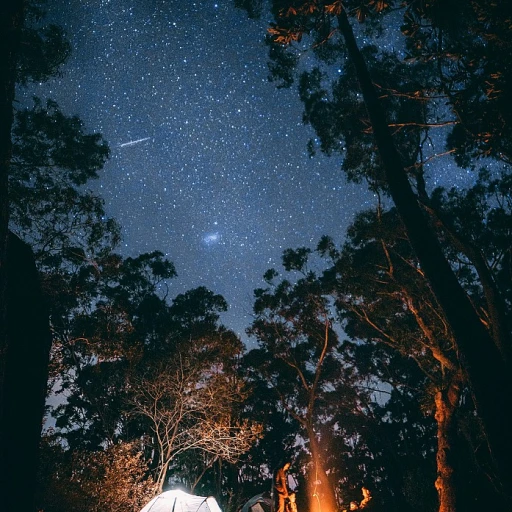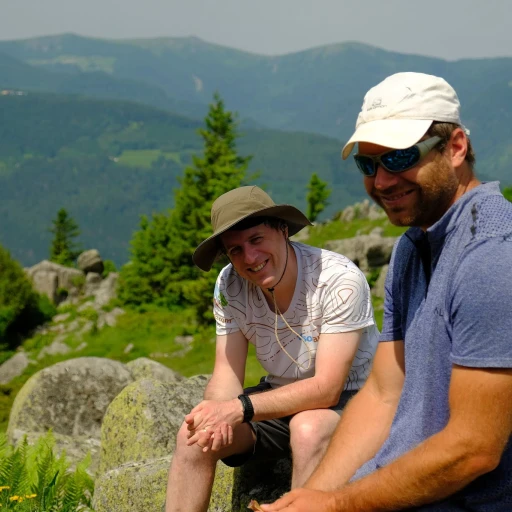
Exploring the beauty of Mont Blanc: a must-do hike
Top 10 hikes in french alps
A breathtaking trek around Europe’s rooftop
The Mont Blanc massif, stretching majestically across France, Italy, and Switzerland, is, without a shadow of doubt, a must-visit for hiker across the globe. Rising to an awe-inspiring height of 4,808 meters (15,774 feet), Mont Blanc isn’t just the peak of its range—it's the pinnacle of many adventurers' dreams.
Every year, about 20,000 hikers attempt to conquer the summit, drawn by the allure of its snowy crest and unparalleled panoramic views over the Alps. However, reaching the top takes more than just enthusiasm. Expertise, proper gear, and sometimes, a local guide become indispensable. Names like Chamonix Guides have built their reputations on safely guiding trekkers to Mont Blanc's peak.
The allure of the Tour du Mont Blanc
For those not aiming for the summit, the Tour du Mont Blanc (TMB) offers an incredible alternative. Spanning roughly 105 miles (170 km), this multi-day loop trail dances around the Mont Blanc massif, weaving through six valleys and three different countries. Enthusiasts typically take 10-12 days to complete this trek, making use of the range of accommodations—from rustic mountain huts to cozy B&Bs in quaint alpine villages.
Not only does the TMB provide ample diversity in terms of scenic beauty, from lush meadows to rocky terrain, but it also allows trekkers to experience the distinct cultures of France, Italy, and Switzerland. It's no wonder this trail often makes its way onto 'World's Best Hikes' lists.
The Chamonix valley, often the starting point for Mont Blanc expeditions, bustles with activity. When you're not on the trail, hop on the Aiguille du Midi cable car or visit the Mer de Glace, France's largest glacier. This valley serves as a hiker's dream hub, offering a multitude of trails, each promising jaw-dropping vistas of Mont Blanc and surrounding peaks.
When's the best time to hike Mont Blanc?
Timing is everything. Ideal hiking conditions usually span from late June to early September. During this window, melting snow unveils safe paths and the lush valleys burst into a symphony of wildflowers. Mont Blanc Treks frequently highlight August as the month's sweet spot, balancing good weather with slightly reduced tourist crowds.
Stay tuned and lace up your boots, as we continue this journey through the best hikes the French Alps have to offer, with highlights on the charming Chamonix valley and the sublime Lac Blanc.
Discover the charms of the Chamonix valley
Discover the charms of the chamonix valley
Chamonix valley is not just about breathtaking views, it's an experience that calls you back, time and again. Nestled in the embrace of the Mont Blanc massif, Chamonix offers a wealth of hiking trails that cater to a range of fitness levels. A particularly favored starting point for many adventurers is Le Brévent. This trail unveils mesmerizing vistas of the Glacier des Bossons and the surrounding mountains.According to Chamonix.net, a record 9.5 million tourists visit the Chamonix-Mont-Blanc area annually, highlighting its enduring global appeal. There's also the Petite Balcon Sud and Petite Balcon Nord trails which offer relatively easy hikes, both showcasing the beautiful diversity of the valley.
Lac blanc: a hike to the stunning alpine lake
The Lac Blanc trail is the epitome of alpine splendor. Situated above the Chamonix valley, the hike to Lac Blanc provides some of the most instagrammable views. Begin from the La Flégère lift and follow the well-marked trail. The path might present some challenges due to the elevation gain, but it's well worth the effort.Upon arrival, hikers are greeted with the serene reflections of Mont Blanc mirrored in the lake's crystal-clear waters. This view isn't just a dream - it's reality for those who reach this alpine haven. A study from ResearchGate states that elevation impacts both physical and mental well-being, with participants citing renewed vigor post-hike.
The tour du mont blanc: a multi-day adventure
Regarded as one of the premier long-distance hiking trails in Europe, the Tour du Mont Blanc covers about 105 miles, touching France, Switzerland, and Italy. This multi-day tour usually takes 10-12 days, with the route providing an immersion into the alpine culture and nature.According to the official Tour du Mont Blanc site, around 20,000 hikers complete the trail annually. Having to navigate varying terrains and rapid weather changes, hikers need to be prepared. Accommodations range from cozy mountain refuges to charming local inns, making every night as memorable as the day's hike.
Lac Blanc: a hike to the stunning alpine lake
An unforgettable journey to an alpine gem
Making your way to Lac Blanc is an experience etched with breathtaking views and undeniable charm. As you start from the famed Chamonix and scale through the trails toward this alpine wonder, the journey offers an unparalleled showcase of the French Alps' beauty.
This hike runs about 3.7 miles (6 km) one way, with an elevation gain of about 3,000 feet (900 meters), making it a moderately challenging route. The trailhead can be accessed from the Flegere lift, perfect for those who seek a direct yet scenic day hike.
A feast for the eyes and soul
Upon reaching Lac Blanc, hikers are welcomed by the stunning turquoise waters of the lake, bordered by towering peaks and the awe-inspiring view of Mont Blanc massif. The reflective quality of the water, when weather conditions are just right, mirrors the snow-capped peaks, offering a picturesque panorama that entices photography enthusiasts and nature lovers alike.
Dr. John All, a renowned mountaineer and researcher at the American Climber Science Program, noted, "Lac Blanc not only provides a remarkable physical challenge but also a profound connection to the sublimity of the natural world, making it a must-visit destination in the French Alps."
Practical tips for a memorable experience
For the best time to hike, aim for the end of June through September when the trails are clear of snow. Bring ample water and snacks, and always check the weather forecast as alpine conditions can be unpredictable. Also, be prepared for varying terrains ranging from rocky paths to gentle meadows.
Whether you're embarking on Lac Blanc as a standalone adventure or incorporating it into longer treks like the Tour du Mont Blanc, it promises an enchanting experience in the heart of the French Alps that's hard to parallel.
The Tour du Mont Blanc: a multi-day adventure
The Tour du Mont Blanc, often referred to as TMB, offers an unforgettable multi-day hiking experience, weaving through stunning landscapes and picturesque villages across three countries: France, Switzerland, and Italy. This epic trek encompasses over 170 kilometers (approximately 105 miles) and typically takes 10 to 12 days, depending on your pace and route variations.
Route and highlights
Beginning usually in the famed Chamonix valley, often cited as the starting point, the Tour du Mont Blanc circumnavigates the Mont Blanc massif. The trail covers a cumulative elevation gain and loss of around 10,000 meters (32,808 feet), making it a physically demanding but immensely rewarding challenge. As you traverse through the diverse terrains, you’ll encounter lush valleys, alpine meadows, glacial lakes like Lac Blanc, and the formidable glaciers such as the Glacier des Bossons.
Experience unforgettable views
The TMB offers some of the best views Mont Blanc has to offer. Notable viewpoints include the Fenetre d’Arpette in Switzerland, the Balcon du Ferret in Italy, and the famous Grand Balcon Nord in France. These panoramic sights provide awe-inspiring vistas that are nothing short of breathtaking, each day bringing a new perspective on the majestic mountain range.
Accommodation and logistics
Throughout your journey, you’ll find a variety of accommodation options ranging from quaint mountain huts (known as refuges) to charming village hotels. Booking in advance is recommended, especially during peak hiking season from late June to early September. Logistics are fairly straightforward, given the trail’s popularity and infrastructure—numerous companies offer guided tours and baggage transfer services, allowing hikers to carry only day packs.
Historical and cultural encounters
The TMB also offers a cultural immersion like no other. As you hike through different regions, you’ll experience a rich blend of French, Swiss, and Italian cultures, each with its own traditions, cuisines, and dialects. Notable stops include the historical village of Les Contamines in France, the chic town of Courmayeur in Italy, and the picturesque hamlet of La Fouly in Switzerland.
Expert insights
According to expert hiker Rick McCharles, editor of BestHike.com, “The Tour du Mont Blanc is a bucket-list hike for any trekking enthusiast. Its well-marked trails and diverse landscapes make it suitable for a wide range of hiking abilities, from seasoned trekkers to enthusiastic beginners.”
Best time to hike
The best time to embark on the TMB is during the summer months, typically from late June to early September, when the snow has melted and the trails are fully accessible. However, it’s important to be prepared for variable weather conditions, as the mountain can be unpredictable even in the summer.
The allure of Grand Balcon Nord
Whisked away by the grand balcon nord
Imagine laying your eyes upon Mont Blanc, the towering peaks of the French Alps, and the sprawling Chamonix Valley from one single trail. Welcome to the Grand Balcon Nord, a hike that promises a feast for the senses like no other.
With an elevation gain that will keep your heart pumping and views that will take your breath away, this route offers an unforgettable experience. Nestled between the Aiguille du Midi and Montenvers, the path stretches about 4.3 miles, translating to around 7 kilometers. Depending on your pace, the trail can be completed in about 3 to 4 hours. However, don't rush; let the panorama sink in.
Alain Dupont, a seasoned hiking expert with over 20 years of exploring the French Alps, says, 'The Grand Balcon Nord is like a love letter to hikers from the Alps themselves.' The trail mostly remains at a high elevation, offering pristine views of glaciers like the Mer de Glace and the majestic Mont Blanc Massif. Furthermore, you can often spot the glacier des Bossons glistening under the sun as you make your way through rocky paths and serene meadows.
Whether you're a seasoned hiker or relatively new to the activity, the Grand Balcon Nord offers something for everyone. The well-marked trail starts from the Plan de l'Aiguille and mostly follows a straightforward route, making it manageable to navigate. But, make sure to bring sturdy hiking boots and enough water; the high elevation can be quite deceiving when it comes to hydration needs. There are no water sources along the hike, and you want to be adequately prepared.
Aside from the natural wonders, there's a touch of local connection too. 'I've met countless hikers who kept coming back just for this trail,' says Lizzie Martin, an employee at the Chamonix tourist office. She shared that the emotional pull of this hike is unforgettable, particularly for those who experience the shifting landscapes as fog lifts in the morning or as the last light of the day caresses Mont Blanc.
The best time to explore the Grand Balcon Nord is from late June to early October. During this time, weather conditions are usually favorable, and snow has melted, revealing the trail in its full glory. Be cautious of sudden weather changes, always check local forecasts on the morning of your hike, and inform someone of your plans.
So, the next time you find yourself drawn to the alpine mountains of France, make sure to give the Grand Balcon Nord a visit. If the heart of Chamonix Valley has caught your attention or Lac Blanc mesmerizes you with its blue hues, this trail will only deepen your love for the French Alps.
Visiting the Aiguille du Midi: a hike to the summit
Getting to the start of your adventure
Getting to Aiguille du Midi reliably is as simple as hopping on the cable car from Chamonix. Trust me, it's an adrenaline rush just getting to the start. The lift, originally built in 1955, takes you to a dizzying altitude of around 3,842 meters. You might want to hold on to your hats and any loose items; the views are jaw-dropping! The Chamonix tourist office can provide detailed schedules and fares (Source: Chamonix Tourism).Hiking at high altitude
Once you step off the cable car, you’ll practically be on the roof of the alps. The high-altitude hike from this peak is an absolute test of will, excitement, and personal achievement. Athletes and casual trekkers alike often sing praises for this route, as it offers breathtaking views of Mont Blanc, the highest peak in Western Europe. The cold, thin air can be a challenge, so acclimatize properly and pace yourself.The Aiguille marvel
Prepare to be mesmerized by the vistas of the mont blanc massif and the surrounding peaks. The route will take you along some of the best hiking trails, featuring ever-changing scenes—from snow-capped summits to sprawling glaciers like the Mer de Glace. It's as if nature decided to display all its grandeur in one go. With an elevation gain of over 1,000 meters, every step brings a fresh, awe-inspiring view of the alpine world.Safety tips from experts
Experts like the Chamonix Guides Company recommend carrying essential safety gear including crampons and an ice axe. Weather conditions can be unpredictable, and it's vital to be prepared. During summer, the best time to hike is early morning to avoid afternoon storms. According to a 2022 report by the Association of European Mountain Guides, around 60% of accidents in alps hiking are due to lack of preparation (Source: AEMG).Blindsiding beauty
You’ll experience sheer beauty from every angle. From the panoramic platform, look over the spine of the Mont Blanc range and spot Italy, France, and Switzerland in one go. Photographers and nature lovers alike will fall in love with the endless snowy ridges. Keep your camera handy for some truly epic shots that’ll make your Instagram pop!What to expect on this hike
This trail isn't just for the pros; intermediate hikers can also find this route incredibly fulfilling. The hike typically takes about 4 to 5 hours, covering a distance of approximately 7 miles. However, it’s essential to keep an eye on the time and your physical state; the altitude can make even a short hike feel quite longer.Feel free to pause at certain points just to soak in the views; the Grande Balcon Nord, for example, is a fantastic spot for a mid-hike breather. The mix of glaciers, valleys, and soaring peaks lining your route creates a tapestry of experiences you won’t soon forget.Whether you're a seasoned alpinist or a first-time visitor, this hike will leave a lasting impression on your soul. Couple this adventure with another great day hike in the Vanoise National Park for a perfect holiday!A day hike in Vanoise National Park
Day hike experiences in the heart of Vanoise National Park
Vanoise National Park, a hiker's paradise in the French Alps, offers a tapestry of trails and sights that leave even seasoned outdoor enthusiasts spellbound. A bit off the usual beaten path, this national park teems with scenic views and surprises at every turn.Exploring Vanoise: what makes it special
Vanoise is famous for its diverse flora and fauna. It's home to over 1,200 ibex and 2,000 chamois, making wildlife encounters a common but thrilling experience. According to the Vanoise National Park management, the area also boasts around 400 km (around 248 miles) of maintained trails, catering to both beginners and experienced hikers.Trail highlights and topographic details
One of the standout trails for a day hike is the Cirque du Fer-à-Cheval. Spanning roughly 10 km (around 6.2 miles) with a moderate elevation gain of 1,000 meters (3,280 feet), this trail rewards hikers with panoramic views of the Vanoise mountain range. A quick tip: the best time to hike is late summer or early autumn when the flora is rustling with vibrant colors and the temperatures are pleasant.The personal touch: a case study
Paul Garcia, a seasoned hiker and photographer from Grenoble, recalls his journey through Vanoise National Park: "It was early September, and the trails were a tapestry of yellows and reds. The lake at the end reflected the mountains like a flawless mirror. It felt like a scene from a painting—it was surreal and absolutely worth every single step." His photos often feature in French travel magazines, adding a visual endorsement to his glowing words.Practical advice and expert insights
Hiking guide Marie Dubois suggests, "Always start early. The park's valleys can get quite hot in the mid-afternoon. Also, bring a good amount of water and snacks; the trails can be longer than they appear on the map."The starting point for most hikes in Vanoise is Pralognan-la-Vanoise, a quaint alpine village that serves as a perfect base. The village is serviced by regional buses and has amenities like rental shops and local cafes where you can find hearty French cuisine.Things to watch out for
Weather in the French Alps can be unpredictable. Always check the local forecast and be prepared for sudden changes. A map, compass, and a reliable GPS device are essential.Check out our post on top 10 hikes in french alps to explore other must-visit trails in the region. Whether you're in it for the adventure or the serenity, Vanoise National Park won't disappoint.The Haute Route: from Chamonix to Zermatt
Connecting two iconic locations: Chamonix and Zermatt
The Haute Route is a legendary trek that links the charming village of Chamonix in the French Alps to the iconic town of Zermatt in Switzerland. This multi-day adventure is not just another hike; it covers around 120 miles (193 kilometers) with an elevation gain of over 12,000 meters, making it a challenge even for seasoned hikers. The journey typically takes 10 to 12 days, depending on your pace and how often you stop to soak in the breathtaking views.
A varied landscape: mountains, valleys, and glaciers
One of the most compelling aspects of the Haute Route is its diverse landscape. You will cross high mountain passes, traverse expansive valleys, and get up close to stunning glaciers like Glacier des Bossons. This route offers endless scenery changes, making each day on the trail unique. According to a 2021 study by the French National Research Institute (source: INRAE), this variety helps to keep hikers both mentally and physically engaged, reducing the risk of trail fatigue.
Expert insights and starting points
Many experts suggest starting in Chamonix for logistical reasons. Chamonix itself is an adventure hub, offering easy access to the European train network and numerous accommodation options. According to Alpine guide Michel Piolat, starting in Chamonix is advantageous as it allows hikers to acclimate to higher altitudes gradually while still enjoying the comforts of this famous town.
Preparation and tips for the route
As the Haute Route is demanding, preparation is crucial. Knowing the approximate distance in miles and expected daily elevation gain can help you prepare adequately. Many hikers recommend doing a few training hikes to acclimatize to extended periods of walking and varying terrains. The best time to hike this route is from late June to early September when the trails are most accessible and the weather is favorable.
Personal experiences and stories
Sarah Thompson, an avid hiker who completed the Haute Route last year, shared her personal experience: "It’s a physical and emotional rollercoaster, but the sense of accomplishment at the finish line in Zermatt is unparalleled. The scenery along the way was nothing short of breathtaking."
Accommodation and facilities along the trail
Along the Haute Route, you'll find various mountain huts, known as 'refuges,' and small inns that offer a place to rest and refuel. Most will provide basic amenities but always check in advance for availability. Many refuges are operated by local alpine clubs, adding a genuine cultural touch to your adventure.
Challenges and controversies
Despite its allure, the Haute Route is not without challenges and controversies. For instance, there have been discussions about trail erosion due to the increasing number of hikers. The Alpine Association of Switzerland (CAS) has been vocal about the need for responsible hiking practices to preserve the natural beauty of the Alps for future generations.
Conclusion: a hike that tests and rewards
The Haute Route is more than a walk between two points; it’s a journey that tests your limits and rewards you with some of the most stunning views in Europe. Whether you’re marveling at Lac Blanc, exploring Vanoise National Park, or gazing up at the Dent Blanche, this hike encapsulates the essence of adventure in the French and Swiss Alps.

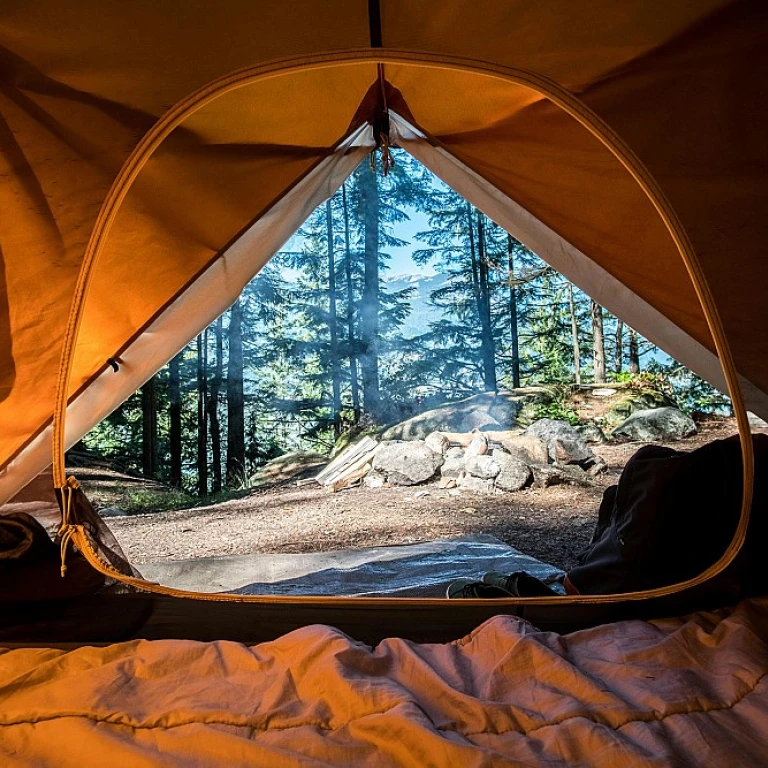
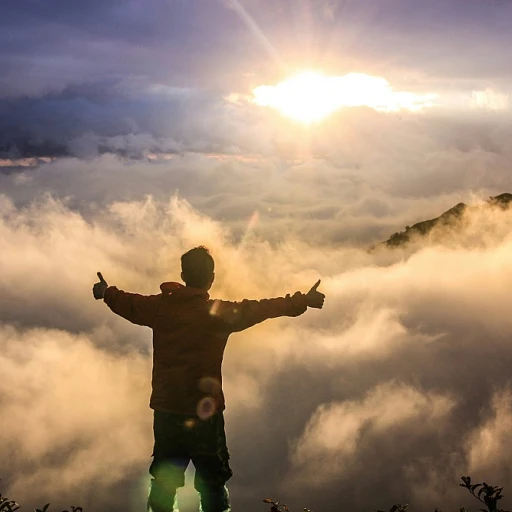
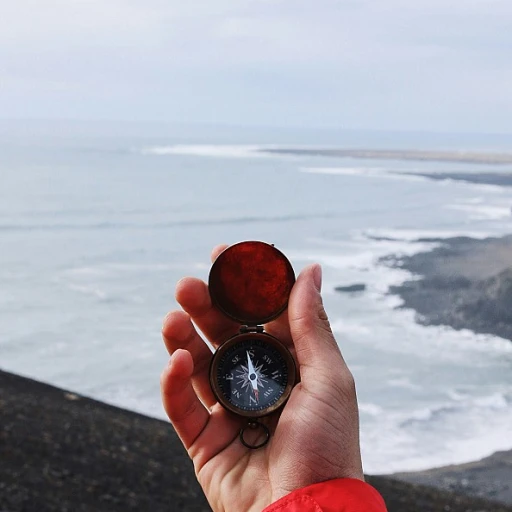
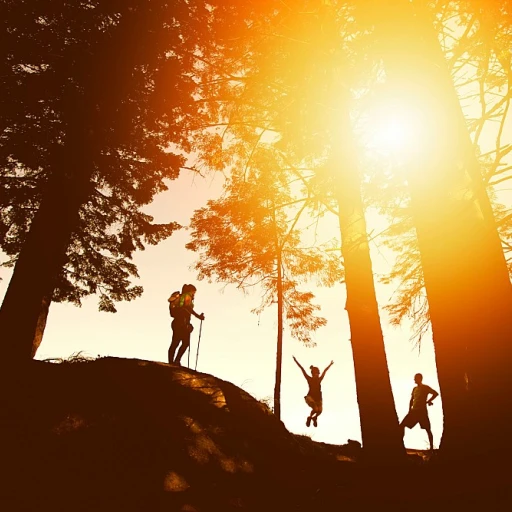
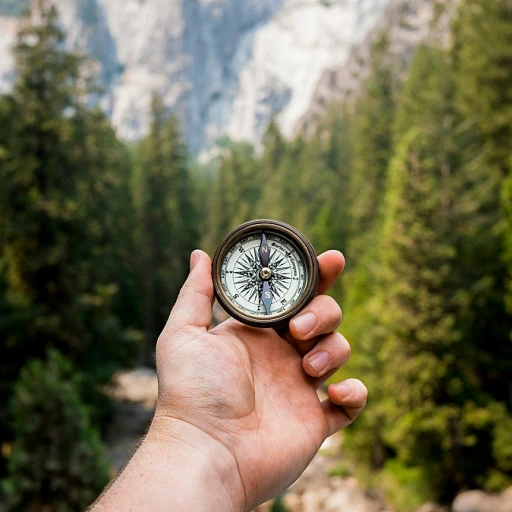
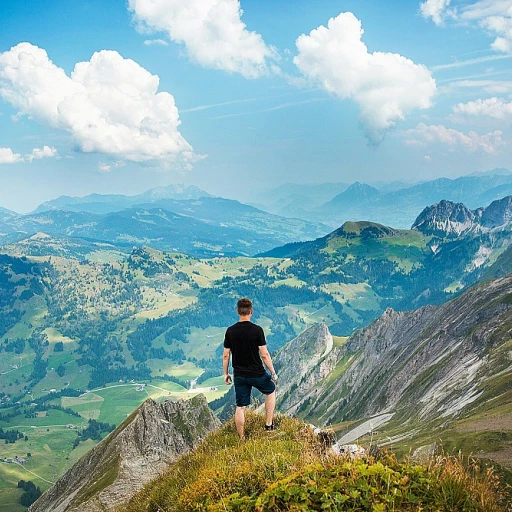
-large-teaser.webp)
